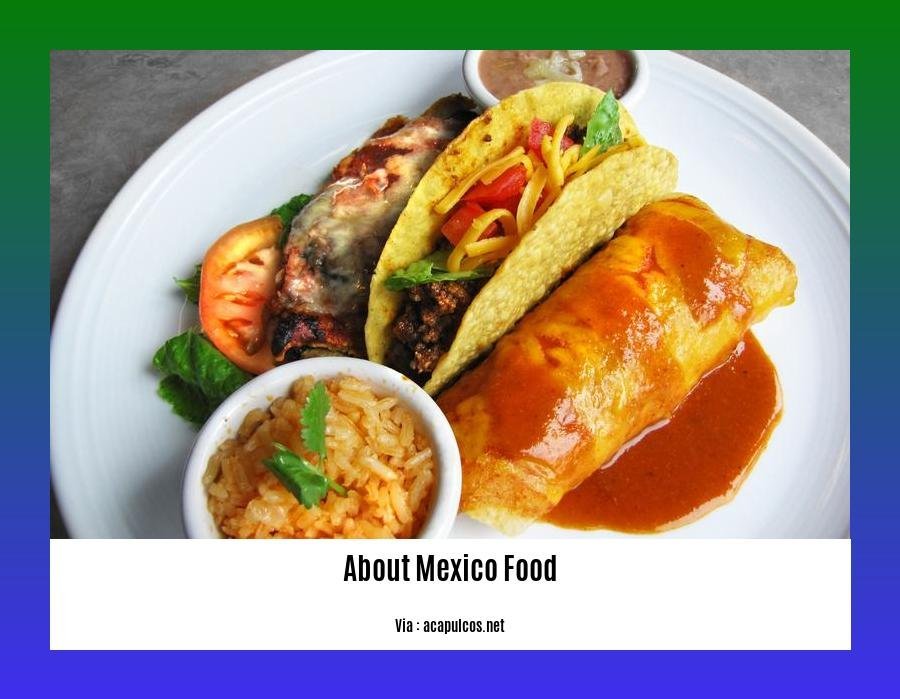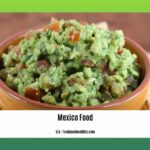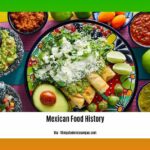Embark on a culinary adventure as we unveil 10 sizzling secrets about Mexican food in [Sizzling Secrets: Unraveling 10 Fun Facts About Mexican Food]. From the origins of tacos to the significance of mole, prepare to be amazed by the fascinating stories behind your favorite Mexican dishes. Let’s dive into a world of flavors, traditions, and unexpected trivia that will leave you craving for more.
Key Takeaways:
- Chocolate, chilies, corn, and tomatoes all originated in Mexico.
- Caesar salad and nachos were both invented in Mexico, not in the United States.
- Tamales are one of the oldest Mexican foods, dating back to the ancient Mayans.
- Avocados from Mexico were banned from the United States for 90 years due to a plant disease.
- Mexico has the most edible insects in the world, and some of them are considered delicacies, like chapulines.
- A traditional Mexican cake called rosca de reyes has a baby figurine hidden inside, and whoever finds it must host a party.
- Mole is a complex sauce made with chocolate and spices, not an animal.
10 Fun Facts About Mexican Food
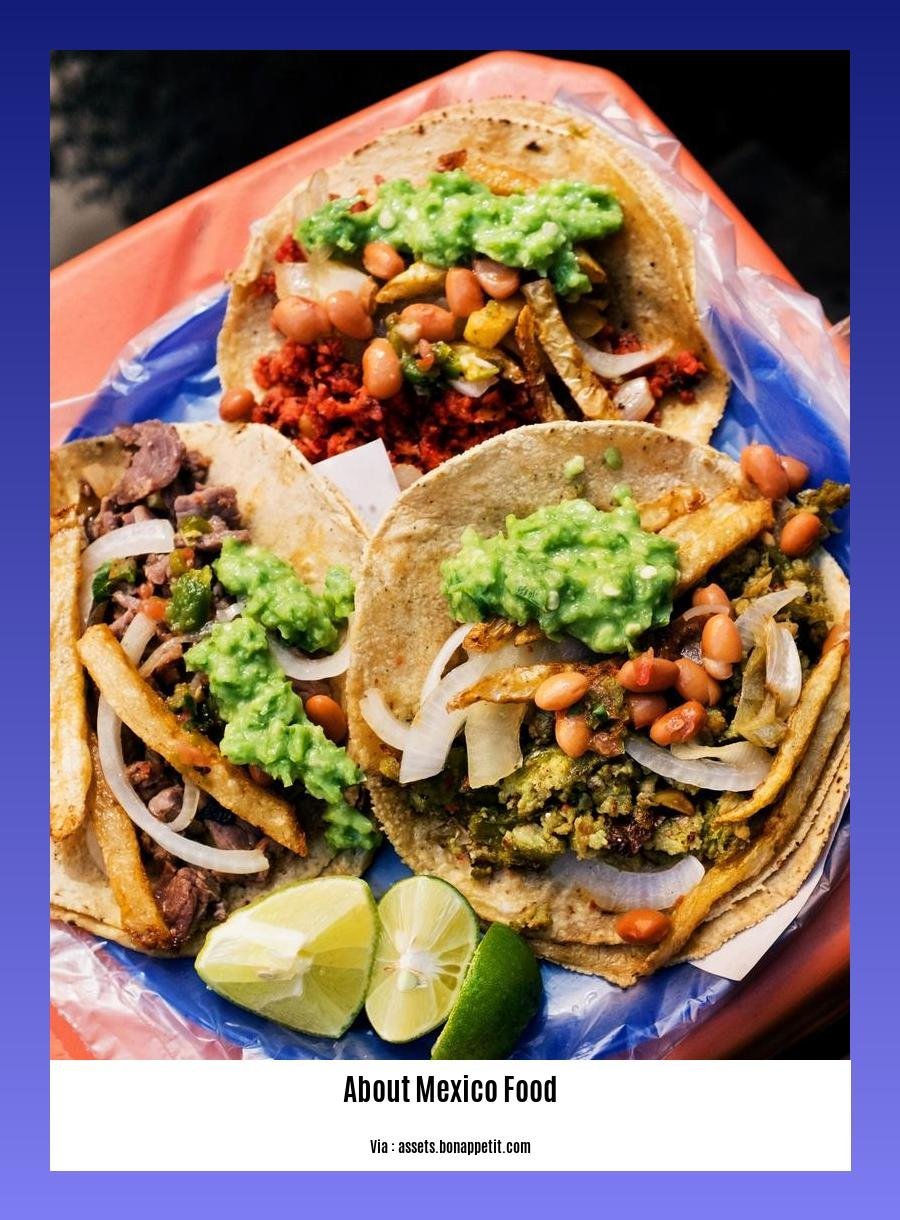
Unlock the vibrant secrets of Mexican cuisine as we delve into a world of flavors, history, and fascinating trivia.
1. The birthplace of culinary stars:
- Did you know that the world’s most beloved culinary creations, such as chocolate, chilies, corn, and tomatoes, originated in Mexico? These ingredients have gone on to become global stars, adding zest and vibrancy to cuisines worldwide.
2. A culinary twist from north of the border:
- Contrary to popular belief, the iconic Caesar salad and the ever-so-crunchy nachos were born in Mexico, not in the United States. These dishes have since crossed borders and become beloved snacks enjoyed worldwide.
3. Tamales: A culinary time capsule:
- Tamales, those delicious corn-based parcels filled with savory goodness, are one of the oldest Mexican foods, dating back to the ancient Mayans. These culinary treasures have stood the test of time, remaining a staple in Mexican cuisine and a delight for taste buds everywhere.
4. Avocados: A temporary farewell:
- Due to a plant disease, Mexican avocados were banned from entering the United States for an astonishing 90 years. It wasn’t until 1997 that these creamy gems were finally allowed to cross the border, much to the delight of avocado enthusiasts everywhere.
5. Edible insects: A protein-packed delicacy:
- Mexico boasts the most extensive variety of edible insects globally, and some of these creepy crawlies are considered delicacies. From crunchy grasshoppers to savory worms, these protein-rich snacks offer a unique culinary experience for the adventurous eater.
6. The rosca de reyes tradition:
- Rosca de reyes, a traditional Mexican cake, holds a sweet secret. Inside its colorful depths lies a tiny figurine of a baby, and whoever finds this hidden treasure must host a party, continuing the tradition of sharing and celebration.
7. Mole: A complex symphony of flavors:
- Contrary to popular belief, mole is not an animal but a complex sauce made with chocolate and spices. This rich and flavorful creation is a testament to Mexican culinary ingenuity, combining sweet, savory, and smoky notes into a symphony of taste.
8. Vibrant street food culture:
- Mexican street food is a vibrant tapestry of flavors and textures, offering a feast for the senses. From mouthwatering tacos and sizzling fajitas to refreshing aguas frescas and sweet churros, these culinary delights are a must-try for any foodie.
9. A culinary journey through history:
- Each bite of Mexican food is a journey through history, a testament to the country’s rich cultural heritage. From ancient Mayan recipes to colonial influences and modern culinary innovations, Mexican cuisine is a living testament to the country’s vibrant past and present.
10. A global culinary ambassador:
- Mexican cuisine has transcended borders, becoming a global culinary ambassador, loved and enjoyed worldwide. Its distinctive flavors, vibrant colors, and rich cultural heritage have made it a staple in restaurants, homes, and hearts around the world.
Uncover fascinating facts about Mexican cuisine in our article on facts about Mexico food.
Discover intriguing insights into French culture with our article on fun facts about France culture.
Explore a world of culinary wonders in our article on interesting facts about Mexico food, revealing the rich history and unique flavors that define Mexican cuisine.
Pozole translates to “foamy” in Nahuatl, the Aztec language, and references the frothy surface that forms when hominy cooks.
In the realm of Mexican cuisine, pozole stands out as a culinary marvel, tracing its roots back to the ancient Mesoamerican civilizations. This hearty soup captivates the senses with its symphony of flavors, paying homage to Mexico’s rich culinary legacy.
The word “pozole” originates from the Nahuatl term “pozolli,” which aptly translates to “foamy.” This linguistic connection beautifully encapsulates the dish’s defining characteristic: the frothy surface that forms as the hominy, a type of dried corn, gently simmers in the broth. The resulting texture and flavor profile set pozole apart, making it a beloved and iconic dish in Mexican gastronomy.
A Culinary Symphony: Unveiling the Essence of Pozole
Pozole’s allure lies in its versatility, with regional variations showcasing the diverse culinary traditions across Mexico. Let’s embark on a culinary journey to discover the three main types of pozole:
• Pozole Blanco: Hailing from the western regions, pozole blanco presents a clear, golden broth adorned with white hominy. Its simplicity allows the delicate flavors of the broth and the hominy to shine through, creating a harmonious balance of tastes.
• Pozole Verde: Originating from the central highlands, pozole verde boasts a vibrant green hue derived from tomatillos, green chiles, and cilantro. This variation delivers a tangy and herbaceous flavor profile, tantalizing the taste buds with its freshness.
• Pozole Rojo: Hailing from the northern states, pozole rojo exudes a deep red color, thanks to the generous use of red chiles. Its spicy and robust flavors are sure to ignite your senses, leaving you craving more.
Honoring Tradition: Pozole’s Cultural Significance
Pozole transcends mere sustenance; it holds a deep cultural significance in Mexico. This delectable soup is often prepared during special occasions and festivities, serving as a symbol of unity and community. Its presence at weddings, religious celebrations, and family gatherings underscores its importance in Mexican culture.
The sharing of pozole represents a bond of friendship and a celebration of life’s milestones. The communal aspect of enjoying this dish reinforces the sense of togetherness and the enduring spirit of Mexican hospitality.
Key Takeaways:
- Pozole, a traditional Mexican soup, derives its name from the Nahuatl word “pozolli,” meaning “foamy.”
- Hominy, a type of dried corn, is the heart of pozole, lending its characteristic texture and flavor.
- Three main types of pozole exist: pozole blanco (clear broth), pozole verde (green broth), and pozole rojo (red broth).
- Pozole holds deep cultural significance in Mexico, often served during celebrations and gatherings as a symbol of unity and community.
- The sharing of pozole strengthens bonds of friendship and celebrates life’s milestones.
Sources:
[1]
[2] https://www.mymexicanrecipes.com/pozole-history-and-facts/
Champurrado, a warm and comforting beverage, is made from maíz, or fresh corn masa, and chocolate, infused with hints of cinnamon and piloncillo.
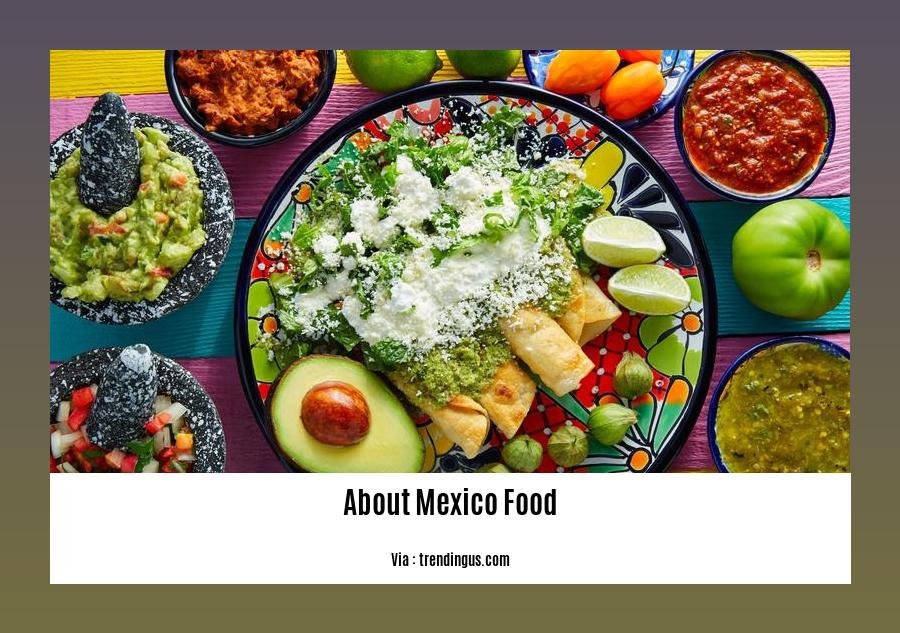
For those with a sweet tooth and a penchant for warmth, champurrado emerges as a culinary masterpiece. Originating from Mexico, this traditional beverage boasts a thick, rich texture and an alluring blend of flavors that dance harmoniously on the palate.
Key Takeaways:
- Champurrado is a quintessential Mexican beverage, deeply ingrained in the country’s culinary heritage.
- Its roots can be traced back to pre-Columbian times, where it was savored by the Aztecs and Mayans.
- The name champurrado is derived from the Nahuatl word “champurrar,” meaning “to mix.”
- This warm and comforting beverage is crafted using a harmonious blend of maíz (corn masa), chocolate, cinnamon, and piloncillo (unrefined cane sugar).
- Champurrado is not only a delightful beverage but also holds cultural significance, often served during festivals, celebrations, and family gatherings.
- In Mexico, it’s customary to indulge in a steaming cup of champurrado accompanied by a warm, fluffy pan dulce (sweet bread).
- The versatility of champurrado allows for regional variations, with some recipes incorporating additional ingredients such as nuts, fruits, or spices.
- This delectable beverage is a testament to the richness and diversity of Mexican cuisine, captivating the hearts and taste buds of food enthusiasts worldwide.
Historical Origins:
The history of champurrado is deeply intertwined with the ancient civilizations of Mexico. Its roots can be traced back to pre-Columbian times, where it was a cherished beverage among the Aztecs and Mayans. During these times, champurrado held ritualistic and ceremonial significance, often served during religious festivals and celebrations.
Preparation and Ingredients:
The preparation of champurrado is a labor of love, requiring careful attention to detail and a deep understanding of the ingredients. At its core lies the harmonious blend of maíz (corn masa), chocolate, cinnamon, and piloncillo (unrefined cane sugar).
Masa: The foundation of champurrado begins with maíz (corn masa), which is crafted from finely ground corn kernels. This imparts a distinctive texture and a subtle, earthy flavor to the beverage.
Chocolate: The essence of champurrado lies in the rich, decadent notes of chocolate. Traditionally, Mexican chocolate is used, boasting a deep, complex flavor profile that elevates the beverage to new heights.
Cinnamon: A touch of cinnamon adds a warm, aromatic dimension to champurrado, enhancing its overall flavor profile and creating a delightful sensory experience.
Piloncillo: The sweetness of champurrado is derived from piloncillo, an unrefined cane sugar that lends a unique, caramel-like flavor to the beverage.
Cultural Significance:
In Mexico, champurrado transcends its culinary significance, becoming deeply embedded in the country’s cultural fabric. It is a beverage that brings people together, fostering a sense of community and shared experiences.
- Celebrations: Champurrado is a staple beverage during festivals and celebrations, symbolizing joy, unity, and the coming together of loved ones.
- Family Gatherings: A warm cup of champurrado is often shared among family members during gatherings, creating lasting memories and strengthening bonds.
- Accompaniment to Pan Dulce (Sweet Bread): In Mexico, it is customary to pair champurrado with a warm, fluffy pan dulce, creating a harmonious combination of flavors and textures.
Variations:
The culinary landscape of Mexico boasts a rich tapestry of regional variations of champurrado. While the core ingredients remain the same, each region infuses its unique touch, resulting in a diverse array of flavors and textures.
- Atole Champurrado: This variation incorporates atole, a traditional Mesoamerican beverage made from masa, resulting in a thicker, more substantial version of champurrado.
- Champurrado de Avena: This variation incorporates oats, adding a creamy texture and a slightly nutty flavor to the beverage.
- Champurrado de Frutas: This variation adds fruits such as strawberries, bananas, or mangoes, creating a refreshing and vibrant twist on the classic champurrado.
Conclusion:
Champurrado, with its rich history, cultural significance, and delectable flavor profile, stands as a testament to the culinary prowess of Mexico. It is a beverage that warms the soul, ignites the senses, and brings people together. Whether savored on its own or paired with a warm pan dulce, champurrado remains a beloved beverage, deeply cherished by Mexicans and food enthusiasts worldwide.
Sources:
- Champurrado: A Warm, Comforting Mexican Beverage
- Champurrado: A Traditional Mexican Hot Chocolate Drink
In the Yucatán Peninsula, cochinita pibil, an iconic dish, traces its origins to the ancient Maya civilization; traditionally cooked underground in a pit
In the depths of the Yucatán Peninsula, a culinary treasure awaits—cochinita pibil, a dish that has captivated palates for centuries. This slow-roasted pork delicacy, deeply rooted in Mayan tradition, is a testament to the vibrant flavors and rich history that define Mexican cuisine.
Cochinita pibil is not just a meal; it’s a celebration of culture, a journey through time that transports you to the heart of the ancient Maya civilization. Its name, meaning “buried pig” in Yucatec Maya, hints at its unique cooking method. Traditionally, a pit oven called a pib is dug in the ground, lined with hot coals and fragrant banana leaves. The marinated pork, infused with achiote paste, sour oranges, and an array of spices, is carefully wrapped in banana leaves and nestled in this earthen oven.
As the heat rises, the pork slowly cooks, absorbing the smoky essence of the pib and the rich flavors of the marinade. The result is a succulent, fall-off-the-bone pork that bursts with flavor in every bite. The vibrant orange color, a hallmark of cochinita pibil, is a testament to the annatto paste, a natural food coloring that imparts a distinctive hue and depth of flavor.
Cochinita pibil is more than just a dish; it’s a culinary symbol of the Yucatán. It represents the enduring legacy of the Maya people, their deep connection to the land, and their mastery of traditional cooking techniques. Whether served on its own, accompanied by warm tortillas, or used as a filling for tacos and panuchos, cochinita pibil is a culinary experience that will leave you craving for more.
Key Takeaways:
- Cochinita pibil is a traditional Yucatec Mayan slow-roasted pork dish.
- Its name, meaning “buried pig,” reflects its unique cooking method in a pit oven called a pib.
- The pork is marinated in achiote paste, sour oranges, and spices, then wrapped in banana leaves and slow-cooked in the pib.
- Cochinita pibil is known for its succulent texture, vibrant orange color, and rich, smoky flavor.
- It is a culinary symbol of the Yucatán, deeply rooted in Mayan tradition and culture.
Sources:
- Cochinita Pibil: The Yucatán’s Famed Barbecue Pork Dish
- Cochinita Pibil, 5 things you need to know
FAQ
Q1: What unique beverage was enjoyed by the Aztec nobility and is still popular in Mexico today?
A1: Champurrado, a warm and thick Mexican chocolate drink made with masa harina, piloncillo, and spices, has its origins in the Aztec Empire, where it was a favorite among the nobility.
Q2: Which Mexican soup is believed to have pre-Columbian origins and is often associated with celebrations?
A2: Pozole, a hearty and flavorful soup made with hominy, meat, and spices, can be traced back to ancient Mesoamerican cultures and holds significant cultural and ritual importance in Mexico, often served at festivals and special occasions.
Q3: What is the unique cooking method used to prepare cochinita pibil, a traditional Yucatec Mayan dish?
A3: Cochinita pibil is traditionally cooked in a pib, an underground oven, where the marinated pork shoulder or leg is slow-roasted wrapped in banana leaves, resulting in its tender and succulent texture.
Q4: Which Mexican dish has a surprising history involving a 90-year ban in the United States?
A4: Avocados from Mexico were banned in the United States for nearly 90 years due to concerns about a plant disease, highlighting the unique culinary history of Mexican ingredients.
Q5: What insect is considered a delicacy in Mexico and holds cultural significance?
A5: Mexico is known for its diverse edible insects, and among them, chapulines, a type of grasshopper, are considered a delicacy, often enjoyed as a snack or used in various dishes, showcasing the unique culinary traditions of Mexico.
